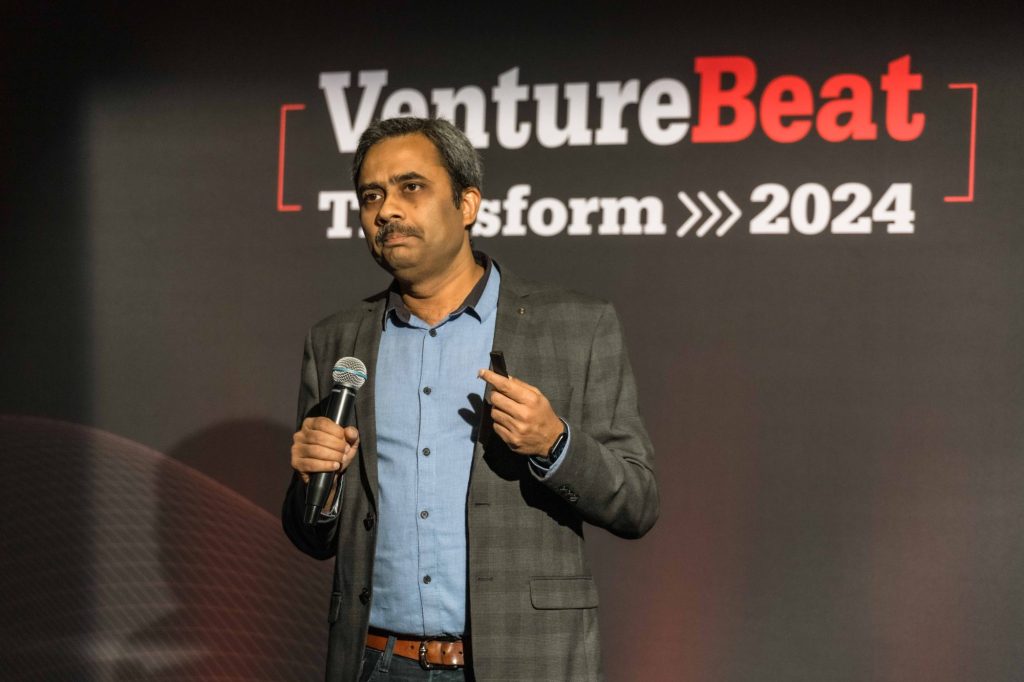Skillsoft: How to go from AI vision to AI reality

Join our daily and weekly newsletters for the latest updates and exclusive content on industry-leading AI coverage. Learn More
Don’t get AI envy — it doesn’t matter where you are on your AI journey, just as long as you’re on it.
Debasis Dutta, SVP and head of Codecademy Enterprise Solutions at Skillsoft, offered this advice at this week’s VB Transform in San Francisco.
“It is the journey which you are on,” he advised. “Just accept where you are, try to learn more, see where you can go and think about the business outcomes.”
Dutta outlined four phases of AI maturity for the audience at VB Transform: exploration, experimentation, innovation and realization. He emphasized that it makes no difference which stage your enterprise is in, “what matters is as you go through these phases, there are different elements that are needed for your success,” he said.
Exploration, naturally, involves identifying use cases, scenarios and real-life examples and outlining what challenges AI is intended to solve. Enterprises all have different needs, and there are many options to consider when it comes to AI tools, capabilities and parameters.
In experimentation phases, those tools will begin coming into play, and leaders should be identifying processes that need to change, while also establishing general guidelines and governance models to have in place “so that nobody’s going rogue,” said Dutta.
Leaders should also be constantly assessing along the way: Is AI helping in the way they expected? Is the organization getting any traction? Are problem use cases actually solvable through generative AI and AI technologies?
Innovation comes when AI begins to truly make a difference in an organization, and ideally in the end, “what happens is AI is just in your DNA and you don’t have to worry about it,” said Dutta.
Change management, skilling critical to success
Of course, that’s the quick-and-dirty, simplified version. Also, timelines will look different for everyone: One enterprise may be in the experimentation phase for a few weeks, while others could be there for several months.
One critical element to address from the very beginning is change management, Dutta emphasized. “Change management is hard, everybody knows that, and that’s what they’re addressing first,” he said.
Skillsoft has trained more than 1 million learners in AI and gen AI over the last two years — working with the likes of Microsoft, AWS and Cisco — and Dutta noted that some of the training platform company’s partners have asked that their CEOs and other C-suite level execs be skilled first to emphasize lead-by-example principles.
Throughout the organization, reskilling and up-skilling — depending on given workers’ roles — is unquestionable, Dutta emphasized. This should be intentional and interactive and based on a gen AI-powered platform.
“You need to have a holistic skilling development program so that you accelerate your AI maturity model,” said Dutta.
Tailored journeys, specifically, can help meet workers where they are and assess where they want to go (and also where the organization wants them to go). Their progress must be effectively measured, Dutta pointed out: Leaders should gradually test after reskilling, continually assess metrics and application rates and determine whether workers are easily and effectively using AI in their day-to-day.
“You just assess them, benchmark them, find out what makes sense, reassess them,” said Dutta.
He underscored the importance of close interaction with tools and continual practice. Because, while you can watch and absorb a lot from videos, “unless you do it, you are not going to believe that it works.”
Ultimately, it’s a holistic top-down, end-to-end process. “So just don’t send people to a skilling program, that’s not going to help,” he said. “You have to have a business outcome in mind. You have to test it out. You have to measure it. You need a program in place. You have to do some program management. You have to ensure there’s a success criteria.”
Internal promotion and marketing is also important for stakeholder management. Dutta noted that there will be naysayers, there will be dismissive people — so how do you handle those conversations?
“You have to understand, what do people need, actually?” said Dutta. “Are they scared about AI? Are they not scared about AI? What are the tools you can give to them so that they are on that journey?”








